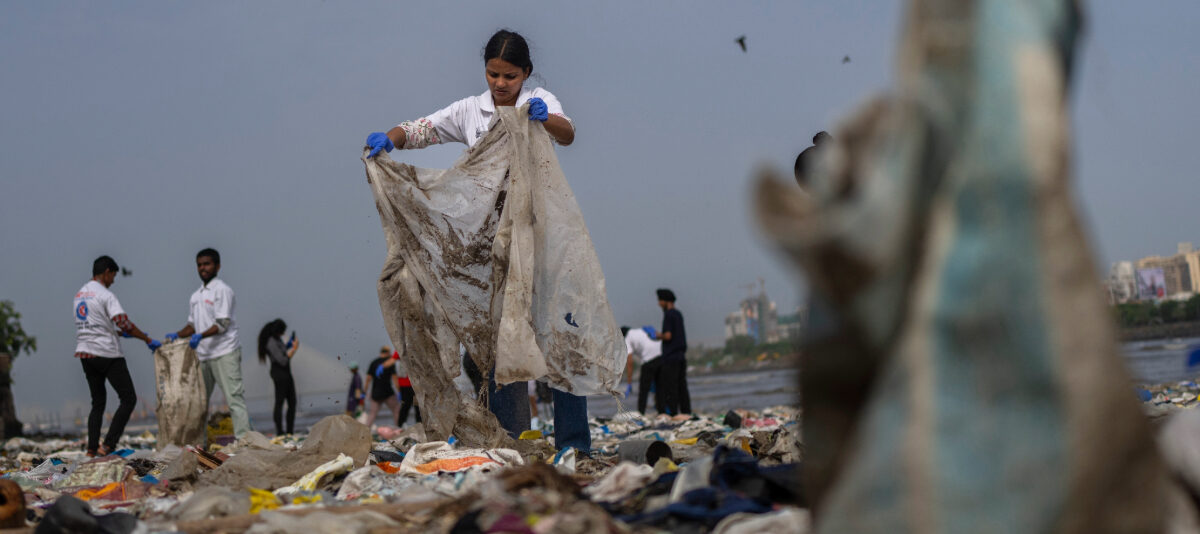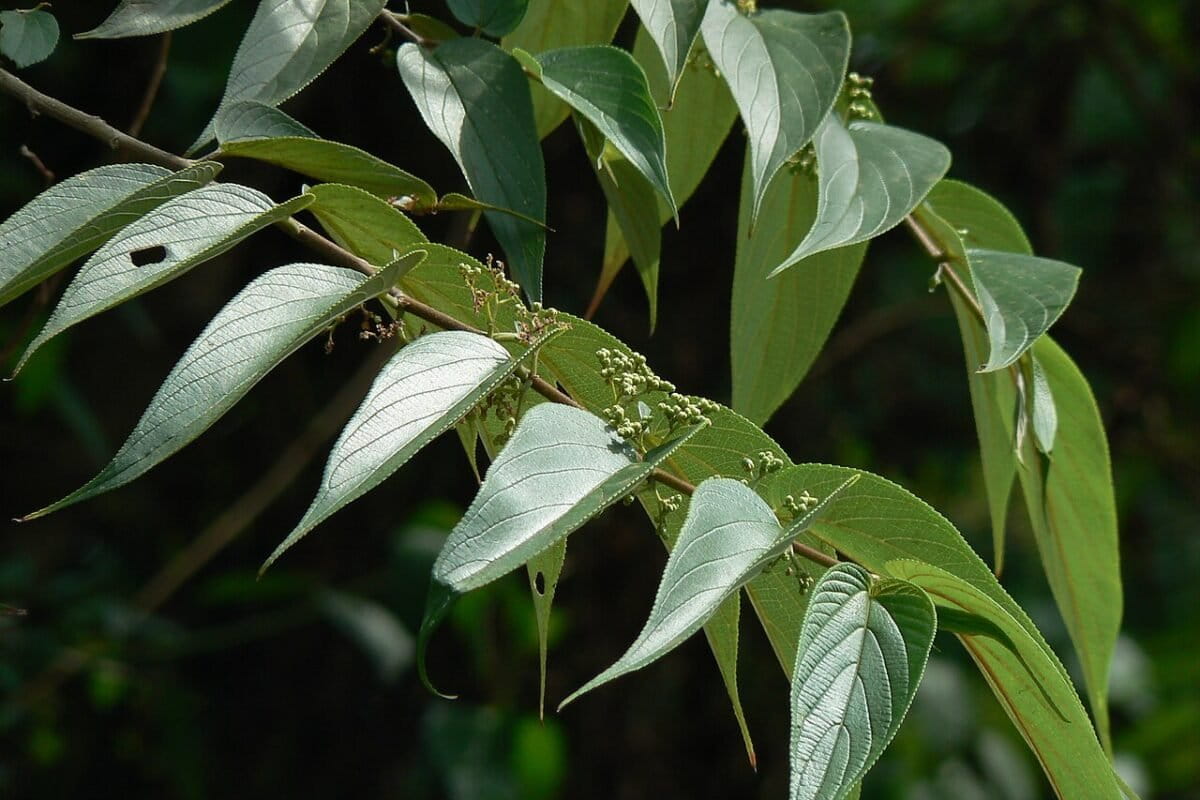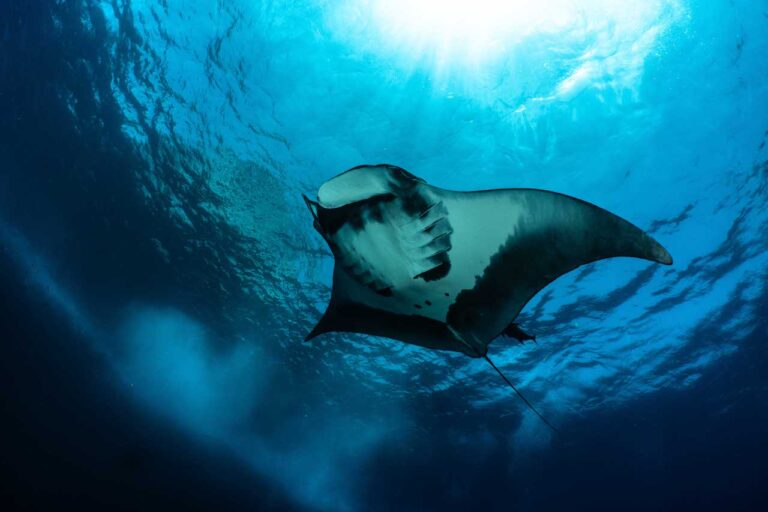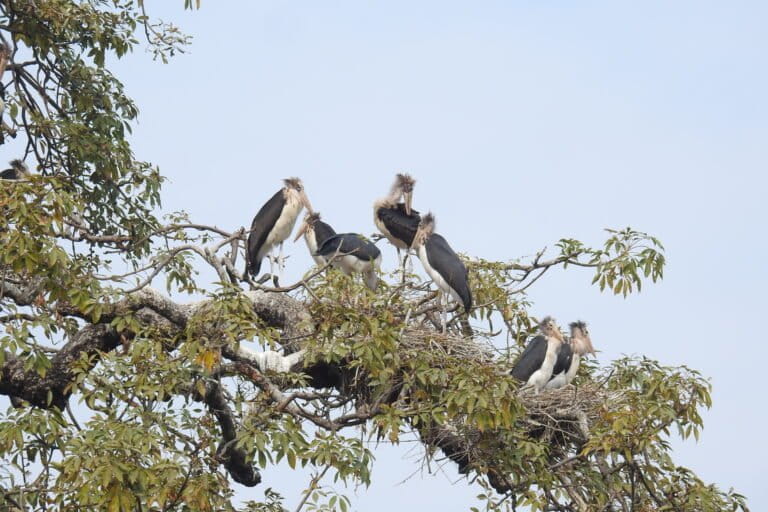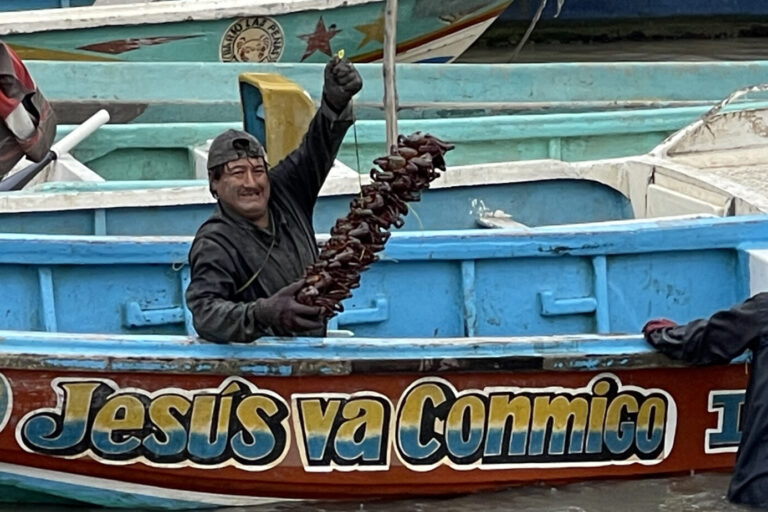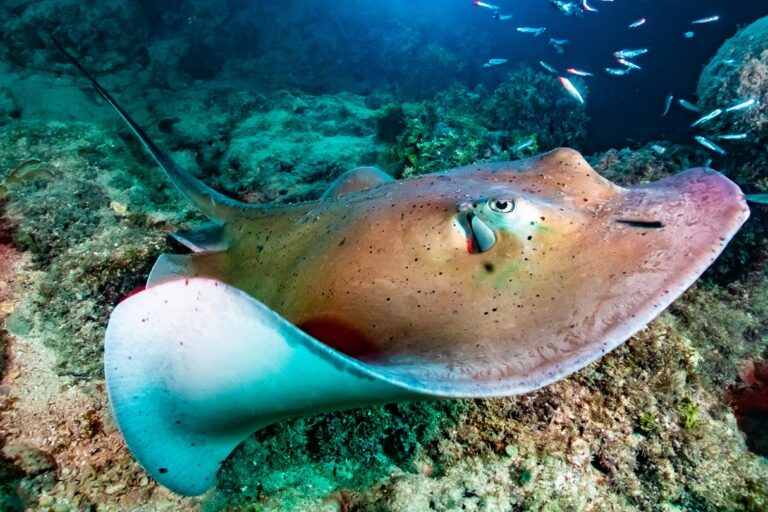- Members of the Indian Ocean Tuna Commission, the intergovernmental body that regulates fishing for tuna and tuna-like species in the region, met May 13-17 in Bangkok.
- Although a decision on reining in catches of yellowfin tuna (Thunnus albacares), which has been declared overfished for the past nine years, was perhaps the most anticipated move of the meeting, delegates failed to reach any such agreement.
- They did, however, strengthen management of skipjack tuna (Katsuwonus pelamis) and swordfish (Xiphias gladius) fisheries, and took steps to rein in fish aggregating devices (FADs), which are criticized for netting large numbers of juvenile tuna and nontarget species, and for polluting the ocean with large amounts of lost fishing gear.
Although yellowfin tuna comprises almost one-third of the global tuna catch, in the Indian Ocean it’s been declared overfished for the past nine years and scientists have described the stock as being “in critical condition.” Yet countries failed to reach any agreement to reduce catches of yellowfin (Thunnus albacares) at the closely watched recent meeting of the Indian Ocean Tuna Commission, the intergovernmental body that regulates fishing for tuna and tuna-like species in the region.
Delegates did, however, adopt the first management measures for skipjack tuna (Katsuwonus pelamis) and swordfish (Xiphias gladius) fisheries, and took steps to rein in controversial fish aggregating devices (FADs), largely used by European purse seine vessels, which represent the biggest tuna fleet in the Indian Ocean.
“The EU welcomes the important decisions reached during the 28th annual meeting of the Indian Ocean Tuna Commission (IOTC), which will make fisheries in the Indian Ocean more sustainable,” the European Commission wrote in a press release, highlighting agreements reached on FADs.
The Maldives, whose fleet mainly catches skipjack and yellowfin, also welcomed the overall outcome of the meeting, praising “the hard work” of the delegations of South Africa, Indonesia, South Korea, the EU, Pakistan, Mauritius and Seychelles to get the FAD measure adopted: “Maldives is pleased that after years of intense negotiations and setbacks, a drifting FAD (dFAD) management measure was adopted,” the Maldives’ Ministry of Fisheries and Ocean Resources posted on X at the meeting’s conclusion.
Observers from some conservation NGOs commented less enthusiastically about the IOTC session, noting that the measures adopted are unambitious and full of compromises.
“There was some progress,” Frédéric Le Manach, scientific director of the France-based Bloom organization, told Mongabay. “But there were many failings, and also the approved proposals have been severely diluted.”
The annual meeting took place in Bangkok from May 13 to 17, and involved delegates from 28 countries bordering the Indian Ocean or with tuna fishing interests there, and the European Union.


According to data collected in a 2023 study, the Indian Ocean is the second-largest tuna-producing region globally, landing about 920,000 metric tons annually, or 21% of the world’s tuna supply, with an estimated value of $2.3 billion. Yellowfin, bigeye tuna (Thunnus obesus), skipjack and albacore (Thunnus alalunga) are the main species caught.
The opposing interests at stake — profit, food security and the protection of marine wildlife stocks — created many expectations around the meeting, which considered a record number of 26 management-measure proposals, and adopted 11.
Stalemate on yellowfin tuna
A decision on whether to restrict yellowfin tuna fishing was perhaps the most highly anticipated of the IOTC meeting. A stalemate on this issue has persisted since 2015, when the IOTC Scientific Committee declared the species overfished in the Indian Ocean. Since 2011, the IUCN has designated yellowfin tuna as “near threatened” globally.
According to the scientific committee’s latest estimates, in 2022 the region’s yellowfin catches reached 410,332 metric tons, well above the maximum sustainable yield of 349,000 metric tons. In 2020, the scientific committee urged a 20% reduction in catches to give the stock a 50% chance of recovery by 2030, and in 2023 stated that, due to continued overfishing, the necessary reduction “may now be higher.”
Yet the IOTC has never reached an effective agreement to cut catches, and this year it rejected a proposal for a new plan. “It is very regrettable that there was no progress at all,” Kerrie Robertson, advocacy lead for the Global Tuna Alliance, told Mongabay minutes after the meeting’s conclusion.
The Global Tuna Alliance is an independent group of retailers and supply chain companies, including Aldi, Sainsbury’s and Tesco, advocating for more sustainable tuna fisheries. In a position statement published before the summit, the group asked IOTC members to “redouble their efforts” to reach a yellowfin catch reduction deal, advocating a cut of 30% compared to 2020 levels, “in line with scientific advice.”
“Even if everyone agrees, they don’t agree on who should have the burden of that reduction,” Robertson said. A key point of contention is how to apportion any catch reduction between the mostly low-income coastal states and the wealthy European countries whose fleets operate far from home.

Europêche Tuna Groupe, the body representing the European tuna-fishing industry, which historically catches the most yellowfin in the Indian Ocean, wrote in a position paper before the meeting that “a few fleets, and essentially EU purse seiners, cannot keep on bearing the burden of other fleets dramatic and uncontrolled catches’ increase.” The statement refers to rising catches in recent years by some countries bordering the Indian Ocean, such as Maldives, and criticizes Indonesia, Madagascar, Oman, Iran, India and Somalia for flouting existing yellowfin catch limits set by an IOTC interim plan in 2021. (A country that formally objects to an IOTC resolution can disregard it.)
In terms of individual countries, between 2018 and 2022, the majority of yellowfin tuna catches came from vessels flagged to Oman (13.2%), followed by Iran (11.5%) and Spain (10.2%), according to the IOTC Scientific Committee.
The proposal the IOTC considered was from Pakistan, South Africa and Iran for a yellowfin rebuilding plan with catch limits by country calculated to reduce the overall catch by 30% below 2020 levels. The proposal urged all IOTC members to “take all necessary measures to ensure that their yellowfin tuna catch does not exceed” the limits and established monitoring programs for “non contracting parties.”
IOTC members didn’t approve the proposal, but did agree to convene a special IOTC session on yellowfin tuna in 2025.
“The market is getting increasingly nervous about the yellowfin, and it’s putting pressure on IOTC,” Robertson said. Retailers are concerned about reputational damage over sales of tuna products labeled sustainable, considering next year will mark 10 years since the IOTC declared this species overfished, she said.
When it came to regulating fisheries for other species, however, the IOTC meeting did make some progress. In particular, members approved the first management procedures for skipjack tuna and swordfish, neither of which is currently considered overfished. A management procedure is a science-based framework to define quotas and catch limits to achieve long-term objectives, such as the health of stocks and their fisheries.
A conservation proposal submitted by Maldives and Pakistan to reduce and monitor bycatch of shark species was withdrawn during the meeting. Observers said delegates from Spain (within the EU delegation) and Japan opposed the plan.

Controversial progress on FADs
The issues of yellowfin overfishing and accidental bycatch of nontarget species are intertwined with the very polarized debate about the use of FADs, floating devices deployed to attract tuna and other fish to facilitate their capture. FADs are criticized for netting large numbers of juvenile tuna, hampering yellowfin population recovery, increasing bycatch and polluting the ocean with large amounts of lost fishing gear.
Among various NGOs urging the IOTC to curb FAD use, Bloom submitted a statement asking delegates to move toward a total ban on drifting FADs (dFADs), free-floating FADs untethered to the seafloor. “[T]una fisheries and the downstream industry would not only survive a ban on drifting FADs, but they would also rapidly and greatly benefit from it,” due to the restoration of the stocks, the statement reads.
The IOTC secretariat estimated in 2023 that vessels deploy 13,600 drifting FADs annually on average in the Indian Ocean. According to a 2022 study in Nature, “more than 40% of dFAD trajectories ultimately drifted away from fishing grounds,” becoming abandoned, lost or discarded. Mongabay reported on the impact of large numbers of these largely plastic devices on the biodiversity and coral reefs of the Seychellois islands.

Bloom calculates that approximately 94% of FAD-enabled catches are attributable to the European fleet. The Europêche position paper argues that it is “unfair to ask purse seiners to make further efforts, including on FAD number reduction.” It asks instead to “accelerate research on FAD biodegradability” to address the pollution issue.
The IOTC meeting in Bangkok considered and approved two proposals on FADs in the last minutes of the last day. One proposal submitted by the EU and Seychelles (whose tuna fleet is largely owned by Spanish and French companies) calls for actions to make FADs biodegradable by 2030. Another, submitted by the EU, prescribes a reduction in the number of FADs allowed for each vessel, from 300 today to 250 in 2026 and 225 in 2028, and the creation of a FAD register to record and monitor the use and location of electronically tagged FADs and mitigate the losses. Records in the register, which the IOTC will manage, would be accessible only to member countries submitting requests for information that are approved by the flag state of the vessel in question.
Bloom’s Le Manach said the FAD register was a welcome “first step,” but the resolution adopted at the meeting is a diluted version of a proposal rejected in 2023, which considered a temporary dFAD closure period. “In the approved resolution there is no mention of a closure, the EU did everything to remove this aspect,” he said.


Invisible vessels and lack of controls
Several proposals called for a more effective system of monitoring and controlling the activity of the fleets in the Indian Ocean.
In early May, the U.K.-based NGO Blue Marine Foundation published a report accusing EU-affiliated purse seine fleets in the region of “turning off their satellite tracking systems for long periods of time, often in areas where the highest levels of tuna catch have been reported.”
“In apparent contravention of numerous EU, national and international laws, more than three quarters of the vessels studied ‘went dark’ for longer than a month at a time, with one operating without its Automatic Identification System (AIS) switched on for over 100 days straight,” the report states.
The IOTC discussed a proposal for a high-seas boarding and inspection (HSBI) scheme outlining procedures to ensure fishing vessel captains accept boarding by authorized inspectors. Other proposals aimed to make satellite-based vessel monitoring systems (VMS) more effective and allow the IOTC a constant view of fleet activity in the region. The IOTC also discussed a proposal by Somalia to prevent, deter and eliminate illegal, unreported and unregulated (IUU) fishing.
“An estimated $300 million is lost annually in Somalia” due to IUU fishing, “which damages local marine resources, affects the livelihoods of local fishermen and diverts funds away from Somalia’s economic development,” Garad Qowqabo, minister of fisheries and marine resources of the Galmudug State of Somalia, commented on X.
However, none of these proposals to improve transparency was approved by the IOTC.
“Far from improving transparency and vessel tracking, the Indian Ocean is becoming increasingly opaque,” Jess Rattle, Blue Marine Foundation’s head of investigations, told Mongabay after the meeting.
Banner image: A yellowfin tuna. Image from the NOAA Photo Library via Flickr (CC BY 2.0).
As one Indian Ocean tuna stock faces collapse, nations scramble to save others
Citations:
Okemwa, G. M., Abubakar, A. A., Mzingirwa, F., Kimani, E. N., Kamau, J. N., Njiru, J. M., & Sauer, W. (2023). Characterizing gear-based exploitation patterns of artisanal tuna fisheries in the western Indian Ocean: A snapshot from Kenya. Regional Studies in Marine Science, 61, 102877. doi:10.1016/j.rsma.2023.102877
Heidrich, K. N., Meeuwig, J. J., Juan-Jordá, M. J., Palomares, M. L., Pauly, D., Thompson, C. D., … Zeller, D. (2023). Multiple lines of evidence highlight the dire straits of yellowfin tuna in the Indian Ocean. Ocean & Coastal Management, 246, 106902. doi:10.1016/j.ocecoaman.2023.106902
Imzilen, T., Lett, C., Chassot, E., Maufroy, A., Goujon, M., & Kaplan, D. M. (2022). Recovery at sea of abandoned, lost or discarded drifting fish aggregating devices. Nature Sustainability, 5(7), 593-602. doi:10.1038/s41893-022-00883-y
FEEDBACK: Use this form to send a message to the editor of this post. If you want to post a public comment, you can do that at the bottom of the page.



